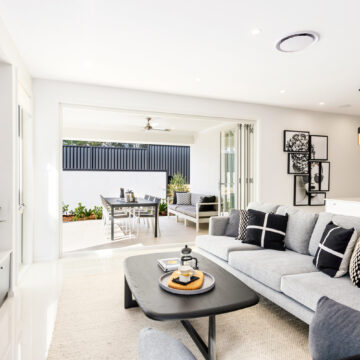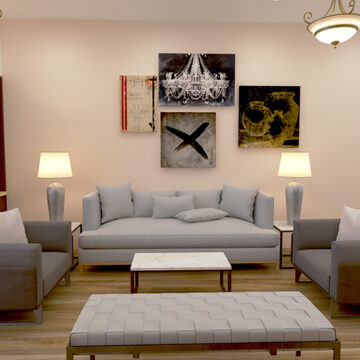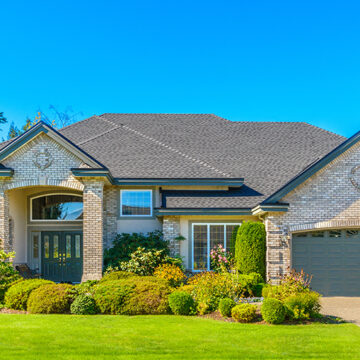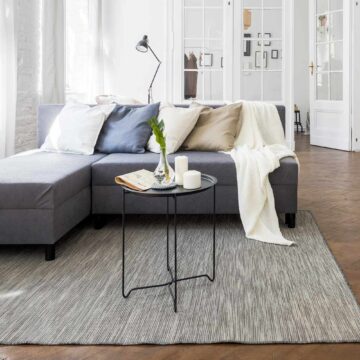How to Design a Stylish Interior for Your Coastal Home – a photo of a coastal home
Coastal homes hold an irresistible allure, captivating homeowners with the promise of salty air, breathtaking views, and a serene lifestyle. To fully embrace the coastal experience, it is crucial to design a stylish interior that complements the natural beauty of the surroundings. In this article, we will explore the art of creating a chic and inviting coastal home, examining key elements and providing examples from different coastal locations in the United States, such as California, the Hamptons, and the Gulf Coast.
Understanding the Coastal Style
The coastal style is a design approach that encapsulates the essence of seaside living. It captures the serene and relaxed atmosphere of coastal environments, bringing a sense of tranquility and connection to nature into the interior space. By incorporating elements inspired by the beach, sea, and natural surroundings, the coastal style creates a harmonious and inviting home.
One of the key characteristics of the coastal style is the use of natural materials. Coastal homes often feature an abundance of wood, rattan, jute, seagrass, and other organic materials. These materials not only evoke a sense of coastal charm but also provide texture, warmth, and a connection to nature. Wood, in particular, is a popular choice, with its versatile appeal and ability to create a relaxed and inviting atmosphere. Furniture pieces made from light-toned woods, such as whitewashed oak or driftwood finishes, are common in coastal interiors.
Colors play a crucial role in defining the coastal style. Soft blues, sandy neutrals, and cool greys are frequently used to reflect the colors of the ocean, sky, and sandy beaches. These soothing hues establish a calm and tranquil atmosphere, mirroring the coastal environment. Additionally, incorporating accent colors can bring a sense of vibrancy and energy to the space. Vibrant corals, aquas, and sunny yellows are popular choices for injecting a playful and lively touch into the coastal design.
Incorporating Natural Materials
To create an authentic coastal feel, integrating natural materials into the design is essential. In a California coastal home, opt for light-toned woods, such as whitewashed oak or driftwood finishes, which complement the sun-kissed beaches and embody a relaxed, beachy vibe. Rattan furniture, jute rugs, and seagrass accessories can add warmth, texture, and a touch of bohemian charm, perfectly complementing the laid-back California coastal style.
Incorporating natural materials is essential when designing a coastal home. These materials bring a sense of warmth, texture, and a connection to nature, enhancing the overall coastal aesthetic. Once you start planning your home design, take a look at a few tips on how to effectively incorporate natural materials into your coastal home design:
- Embrace Wood. Consider incorporating reclaimed or weathered wood elements for a rustic touch.
- Rattan and Woven Fibers. Woven fiber rugs, such as jute or sisal, add texture and a natural feel to the floors. Introduce woven fiber pendant lights or lampshades to create a coastal-inspired lighting scheme.
- Seagrass and Natural Fibers. You can also consider seagrass wall coverings or window blinds to add visual interest and a touch of coastal charm.
- Organic Fabrics. Incorporate organic fabrics like linen and cotton for curtains, upholstery, and throw pillows. These fabrics evoke a sense of breeziness and comfort, perfect for a coastal home.
- Shell and Coral Accents. Displaying seashells, coral, and other ocean-inspired elements can add an authentic coastal touch to your home.
- Stone and Natural Stone Accents. Natural stone, such as marble or granite, can be incorporated into countertops, backsplashes, or fireplace surrounds to add a touch of elegance and luxury to your coastal home.
- Indoor Plants. Bring the outdoors inside by incorporating indoor plants into your coastal home design. Plants not only add a natural element but also contribute to the overall air quality and create a calming atmosphere.
Remember, the key to incorporating natural materials is to strike a balance between different textures and elements. Mix and match various materials to create depth and visual interest, while ensuring that the overall design remains cohesive and harmonious.
Creating a Light and Airy Atmosphere
The hallmark of a coastal home is a light and airy atmosphere that embraces the outdoors. In a California coastal home, large windows are a must to capture panoramic ocean views and allow natural light to flood the space. Choose sheer curtains or light-colored blinds to maintain privacy while maximizing the flow of light. Open floor plans and strategically placed mirrors can further enhance the sense of spaciousness and invite a refreshing breeze to permeate the interiors.
When decorating your new home, it’s crucial to avoid overcrowding and prepare your belongings for storage to protect them during the process. Professionals from royalmovingco.com suggest it’s best to start by decluttering and organizing your items. Next, you should separate those you plan to store from those you’ll keep in the immediate living space. Pack delicate items with care, and clearly label each box to make unpacking easier. Taking these steps will ensure that your belongings remain safe and well-preserved while you focus on designing and settling into your new coastal home.
Nautical and Beach-Inspired Accents
To accentuate the coastal theme, incorporate nautical and beach-inspired accents that evoke a sense of maritime charm. In a Hamptons-inspired coastal home, infuse the space with classic nautical elements, such as navy and white striped textiles, ship-inspired artwork, and brass accents reminiscent of yacht fittings. Opt for natural fiber rugs, such as sisal or rope-inspired designs, to add texture and warmth to the floors, creating a cohesive coastal ambiance.
Create enough storage space in your home
Adding sufficient storage space in your coastal home is essential for maintaining a clutter-free and organized environment. Consider incorporating built-in shelves or cabinets with a weathered wood finish to blend seamlessly with the coastal aesthetic while providing functional storage. Utilize woven baskets or rattan bins to store beach towels, blankets, and other coastal essentials, ensuring they are easily accessible yet neatly tucked away. If you need to put some of your belongings away, you can always consider renting a storage unit temporarily. After all, your coastal home should feel spacious and airy, not overcrowded.
Personalizing Your Coastal Home
While embracing the coastal style, it is important to infuse your personal touch into the design, reflecting your unique experiences and memories. In a Gulf Coast coastal home, display seashell collections gathered during beachcombing adventures or frame photographs capturing breathtaking sunsets over the Gulf of Mexico. Incorporate weathered driftwood or reclaimed wood pieces as accent furniture, adding a rustic touch that pays homage to the coastal environment.
Choosing the Right Color Palette
Finally, the color palette plays a pivotal role in creating a coastal aesthetic. For a California home on the coast, draw inspiration from the stunning Pacific coastline and incorporate a palette of soft blues, sandy neutrals, and cool greys. These soothing hues reflect the colors of the ocean, sky, and shoreline, fostering a tranquil atmosphere. Additionally, infuse the space with accent colors like vibrant corals, aquas, or sunny yellows to add pops of energy and evoke the vibrant coastal lifestyle.
Conclusion
Designing a stylish interior for your coastal home allows you to fully immerse yourself in the beauty and tranquility of seaside living. By understanding the coastal style, selecting the right color palette, incorporating natural materials, creating a light and airy atmosphere, incorporating nautical accents, and infusing your personal touch, you can create a coastal retreat that is both sophisticated and inviting. Whether it’s a California home with its relaxed and bohemian vibe, a Hamptons-inspired residence with classic nautical elements, or a Gulf Coast abode that embraces rustic charm, the possibilities for coastal home design are as vast and diverse as the coastal regions themselves.
Meta Description:
















